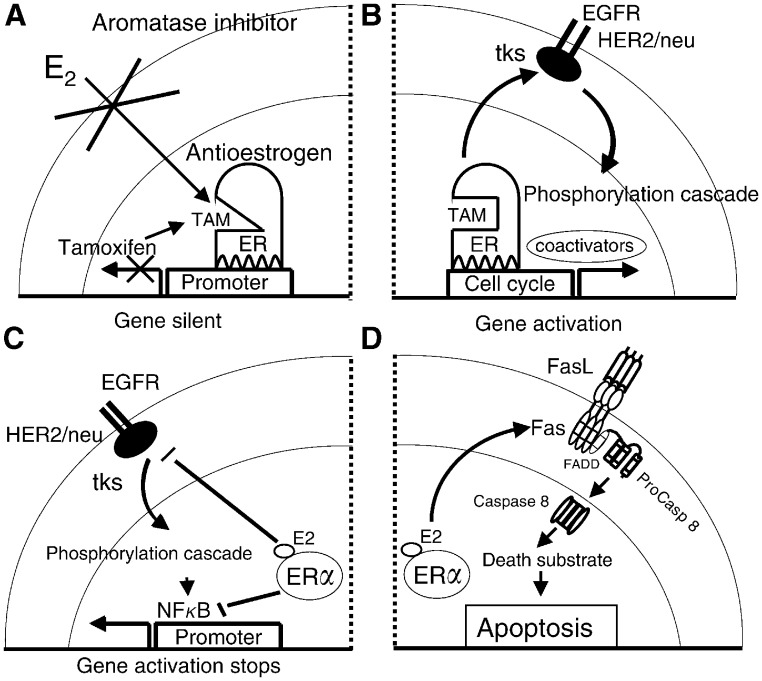Figure 3.
The development of tamoxifen (TAM)-resistant breast cancer and the changing role of oestradiol (E2) in the life and death of ER-positive cancer cells. (A) E2-stimulated growth is inhibited by the use of an aromatase inhibitor to block oestrogen synthesis or TAM to block the ER and prevent oestrogen-stimulated gene transcription. Optimal antioestrogenic effects occur in the absence of pre-existing cell surface signalling mechanisms. (B) Prolonged use of TAM promotes an increase in HER2/neu cell surface signalling that creates a survival pathway phosphorylating the TAM ER complex and coactivator proteins. The transcription complex becomes activated to enhance gene activation and TAM-stimulated growth. If this is Phase I resistance, then oestrogen will also promote growth; so an aromatase inhibitor is an appropriate second-line therapy. If it is Phase II resistance, E2 causes apoptosis. (C) In Phase II tamoxifen resistance, the E2 ER complex collapses the survival mechanisms by dramatically reducing the level of cell surface signalling by preventing HER2/neu mRNA transcription and the nuclear level of NFκB, a transcription factor. (D) In Phase II tamoxifen resistance, the E2 ER complex also enhances the synthesis of Fas receptor mRNA and protein which, in the presence of Fas ligand (FasL) activates caspase 8 and a cascade of events resulting in apoptosis. These figures are summaries of the mechanisms described in Osipo et al (2003) and Liu et al (2003).

